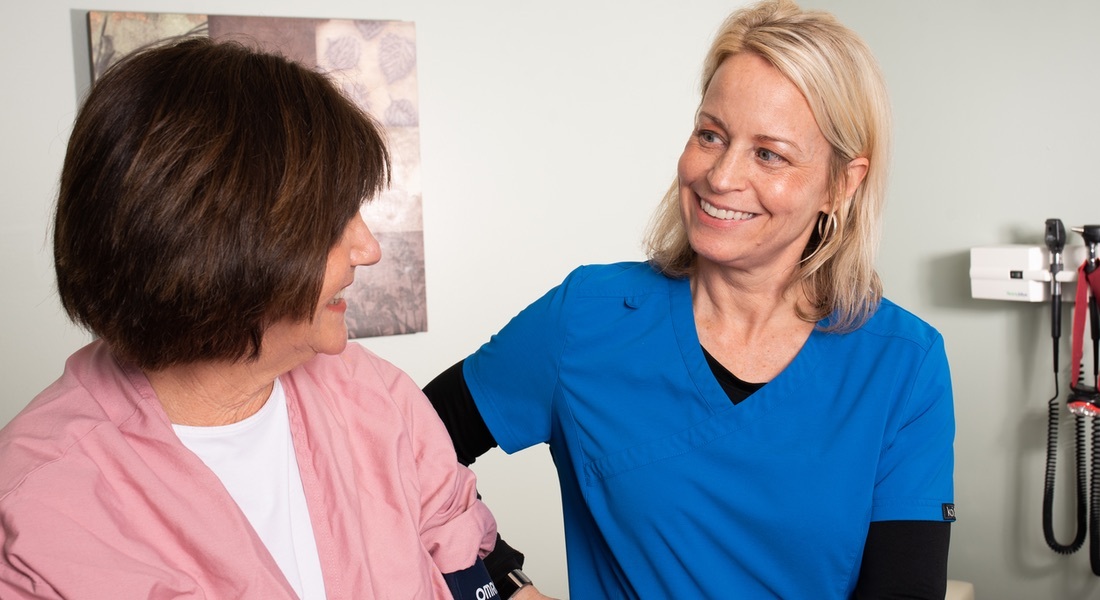
The most common symptom of breast cancer is the presence of a painless lump or mass in the breast. Unfortunately there are very few symptoms for most patients otherwise. Because of this, it’s important to become familiar with your breasts and how they feel regularly. The more in touch you are with your breasts, the more likely you’ll notice something out of the ordinary.
Lumps are usually hard to the touch and uneven along the edges, although in some cases, they are soft and rounded. If you discover a lump, try to stay calm because not all lumps are cancerous. The two most common causes of breast lumps are fibrocystic breast condition and cysts. Fibrocystic condition causes noncancerous changes in the breast that can make them lumpy, tender, and sore. Cysts are small fluid-filled sacs that can develop in the breast. Still, it’s best to have it evaluated by your primary care physician or gynecologist as soon as possible. If it’s not cancer it could be an infected and swollen lymph node or milk duct that may require antibiotics. If it is cancer, getting answers as soon as possible will make it easier to treat.
Because there are different breast cancer types, there are some other signs and symptoms that are worth paying attention to as well. If you notice one or more of these or anything out of the ordinary, make an appointment to have it checked out by your doctor.
Other common signs and symptoms that could indicate breast cancer include:
Breast pain
Change in size or shape of the breast
Swelling of all or part of the breast (even when there is no lump present)
A lump in the underarm or collarbone area
Nipple pain or a newly inverted nipple
Itchiness or skin irritation in the breast area
Redness, scaliness, or thickening of the nipple or breast skin
Dimpling of the breast skin (may resemble an orange peel)
Discharge from nipple, other than breast milk
Knowing what red flags to look for regarding breast cancer is as equally important as knowing what is considered normal. Discovering a change in your breasts can be alarming, but there are times when it is related to something other than cancer.
Menstruation, pregnancy, weight change, medications, and aging can all contribute to normal breast changes. Being mindful of your ongoing breast health and being able to recognize what may be normal for your body can help you easily identify any signs of abnormalities.
While there is no guarantee that you’ll avoid breast cancer, you can be proactive by increasing your awareness of the signs and symptoms, and making sure you’re getting screening mammograms on-schedule.
Early detection is key when it comes to having a better outcome. If you are experiencing any of the symptoms mentioned above, or if you’re having pain at times other than the start of your menstrual cycle, you should consider talking with your gynecologist about a mammogram screening.
When it comes to detecting breast cancer, mammograms are known to be 87% accurate. If screening detects a suspicious mass, additional tests may be recommended so a diagnosis can be made — but the sooner you know, the sooner you can receive treatment, if needed.
Feeling a mass or getting a breast cancer diagnosis can be scary. The good news is that there are significant advances in breast cancer treatment and patient outcomes are getting better all the time.
Quickly and efficiently build the materials you need to support your inbound marketing strategy. Drag and drop building blocks including testimonials, forms, calls-to-action, and more.